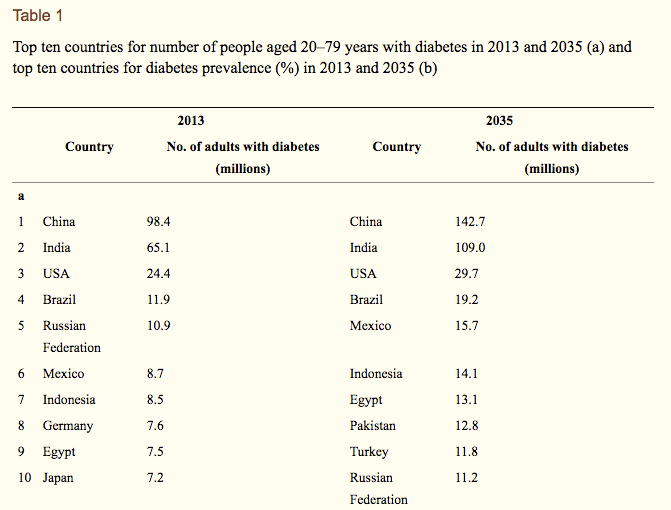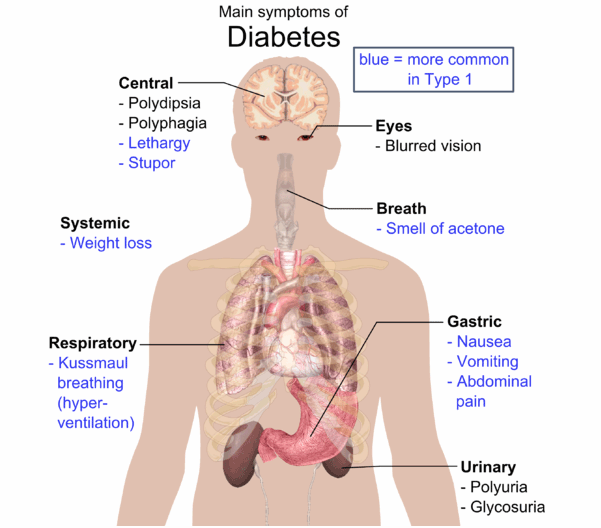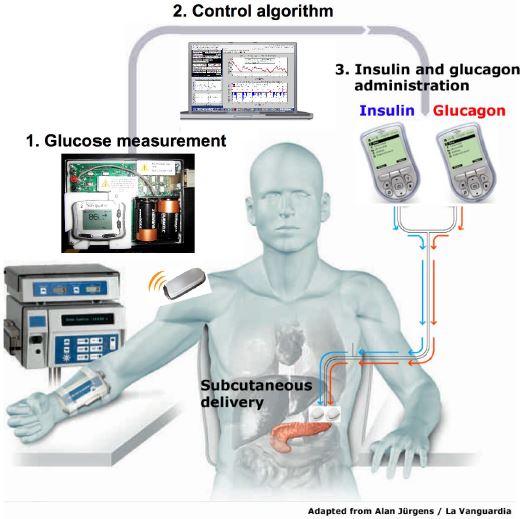Table of Contents
DIABETES
Epidemiology
The global prevalence of diabetes has been steadily increasing and on the rise. With increased availability of fast foods and unhealthy options, this causes an increase in poor health behaviours, raising a big concern. Based on previous data that captures future trends in diabetes frequency, the number of adults with diabetes globally has been projected to increase from 382 million to 592 million by 2035. The epidemiology of diabetes varies depending on different factors such as the type of diabetes, sex, age, geography, ethnicity and genetics.
Type 1 diabetes: It has been shown that in most populations, the highest incidence of type 1 diabetes is in between birth and 14 year old children. More specifically, the geographical location has an impact on the incidence of type 1 diabetes in children, with Finland having the highest incidence and Venezuela having the lowest. In general, countries in Europe and North America had higher incidences of type 1 diabetes in children under the age of 14 compared to countries in south America and Asia (with Kuwait as an exception). It has also been shown that males are slightly more prevalent to type 1 diabetes than women.
Type 2 diabetes:
Individuals with type 2 diabetes account for more than 85% of the total cases of diabetes. Similar to type 1 diabetes, the prevalence of type 2 diabetes varies according to geographical locations. It has been shown that western countries and ethnic groups that have developed a western diet, have the highest prevalence of type 2 diabetes. These countries include different regions in USA, China and India. In fact, the prevalence of type 2 diabetes in China is projected to increase from 98.4 million to 142.7 million by 2035. Developing countries on the other hand, have the lowest prevalence of type 2 diabetes, specifically in rural areas such as the Mapuche Indian region in Chile. The prevalence of type 2 diabetes increases quickly with age in both genders.

Symptoms
Diagnosis
There are several methods and tests available to screen for diabetes. The most common method is the use of blood tests. A blood test measures high blood glucose levels, which are known to be an indication of diabetes. A total of two abnormal blood tests are required for an official diagnosis for diabetes.
 A1C Test:
A common blood test that is usually used to screen for diabetes, is the glycated hemoglobin test (A1C). This blood test measures the blood glucose that is attached to hemoglobin. The more there is blood glucose attached to hemoglobin, the higher the level of plasma glucose. In general, an A1C range of 7.5-6.4% indicates prediabetes. And a measure of 6.5% or higher on two A1C tests is an indication of diabetes.
A1C Test:
A common blood test that is usually used to screen for diabetes, is the glycated hemoglobin test (A1C). This blood test measures the blood glucose that is attached to hemoglobin. The more there is blood glucose attached to hemoglobin, the higher the level of plasma glucose. In general, an A1C range of 7.5-6.4% indicates prediabetes. And a measure of 6.5% or higher on two A1C tests is an indication of diabetes.
Some patients are not able to get an A1C test done for various reasons , therefore a normal blood glucose test can be done for a diagnosis. A plasma glucose test can be done while fasting or non-fasting (random blood glucose count).
Fasting: This blood test measures the fasting blood glucose levels. A fasting blood glucose range of 100-125 mg/dL is considered as prediabetes. A result of 126 mg/dL or higher of fasting blood glucose levels is an indication of diabetes.
Non-Fasting: This blood test measures the blood glucose levels at any random time. A random blood glucose levels of 200 mg/dL or higher suggests diabetes.

